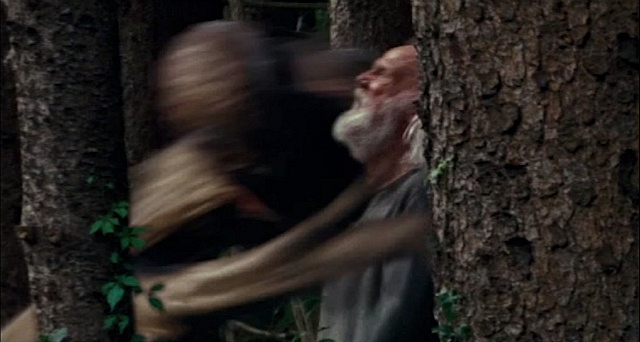The only thing that didn’t quite work about John Krasinki‘s A Quiet Place (’18) is that I could never detect a social metaphor. The horror, it seemed, was totally situational in a random-ass way. Don’t make a sound or the big brown alien monsters will rush in and murder you whambam. Okay, fine, but what’s the real-life echo?
Howard Hawks and Christian Nyby‘s The Thing was about early ’50s paranoia over invaders from the sky, be they Russians or flying saucers. Don Siegel‘s Invasion of the Body Snatchers was about submitting to the blandness of the Eisenhower years…the mid ’50s conformity of the suburbs. George Romero‘s Night of the Living Dead was about a sick society grappling with evil histories and buried behaviors — dead bodies walking the earth in order to wreak vengeance. Rosemary’s Baby was…I’m not sure but it had something to do with that 4.8.66 Time magazine cover that asked “Is God Dead?” Jennifer Kent‘s The Babadook was some kind of metaphor about car crashes and dead husbands and the terror of facing parenthood alone.
But what was A Quiet Place about?
It hit me a couple of days ago. All you have to do is change “don’t make a sound” to “don’t make the wrong sound” or more precisely “don’t say the wrong thing.” Then it all fits. The big brown monsters are fanatical wokesters who rush in like the wind and destroy your life and livelihood if you mutter the wrong phrase or use incorrect terminology or happen to like Real Time with Bill Maher or late-period Woody Allen films or if you posted the wrong thing in 2009, etc.
Now it makes sense! Now I get what Krasinki was on about, and what A Quiet Place Part II probably has in mind. I’m perfectly serious.










